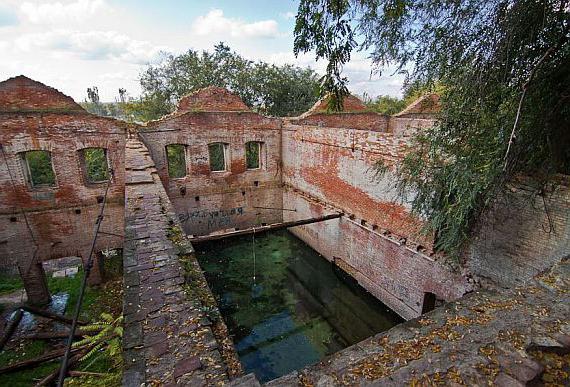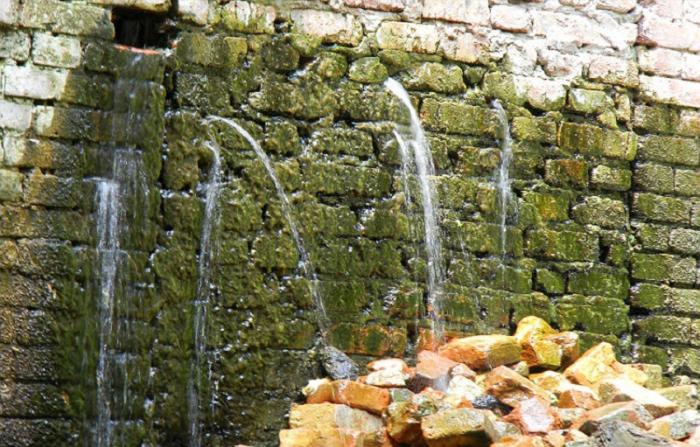In the early nineteenth century, Rostov-on-Don became a major shopping center. The river port receives ships from all over the world. Export performance is skyrocketing. Due to this, the lightning-fast development of Rostov as the trading capital of the south of the entire empire begins. The entire economic life of the port by the middle of the century is concentrated in the hands of particularly wealthy and far-sighted merchants. They invest in warehouse equipment, placing them on the Don coast. Immediately he turned into the logistics center of the southern capital. Such entrepreneurs included Elpidifor Paramonov and Peter Maximov.
How warehouses began to be called Paramonovsky
In the middle of the nineteenth century, according to the project of architects Shulman and Yakunin, the first warehouse complex grows. Toward the end of the century, their number reaches five. At that time, three of them belonged to the well-known vowel of the City Duma, the Rostov Cossack Pyotr Maximov, and the rest to Elpidifor Paramonov. So why today is this monument called directly Paramonovsky warehouses? This happened due to the fact that Maximov did not possess the charisma, popular love and the widest fame that were characteristic of his colleague.
Elpidifor Paramonov was famous in Rostov! He was incredibly rich, but at the same time, every Rostov citizen took off his hat in front of him, meeting him on the street, as he was more decent, hardworking, and disinterested in Rostov either before or after. The Rostovites gave the Paramonov dynasty donated hospitals and schools. Elpidiphora was called the bread king of the country for the quality and volume of turnover of its flour. He was also the owner of steamboats, mills, coal mines ... The deepest mine Elpidifor produced annually about 35 million pounds of coal, which is a huge indicator even for the 21st century! The rapidly expanding city of its heroes knew, and Maximov did not care. Consequently, in the people's memory, these structures are rooted as Paramonovsky warehouses.
Work in warehouses
In port warehouses, labor was hard. Even overwhelming, exhausting. In this place, at the turn of the 19th and 20th centuries, Maxim Gorky, a proletarian famous writer (known among the Rostov movers as Lyokha Peshkov) worked. Then he will all complain about this hard labor. Here in the season worked fourteen or more hours a day. Overwork here was the norm. Accidents happened here very often: either someone would break his back, or he would crush someone with an anthracite stone ... But there was no shortage of workers. They paid well in this place, it was difficult to get to the warehouses in Rostov-on-Don. The working people hated earnestly any mechanization of labor introduced, since all mechanization, despite the fact that it facilitated the work of workers, took away their bread along with work! Due to this, every novelty the hard workers tried to disable.
Twentieth Century
Paramonovskie warehouses at the beginning of Soviet power moved to the state. property, while not losing their purpose. During the period of port bombing in the Second World War, an air bomb hit this place, destroying the water cooling system. Although the structures as a whole survived. Here, after the war, building materials, cement, etc. were stored. At the same time, warehouses did not destroy bombs and wars, but the irresponsibility of the rulers and their ownerlessness. As well as looters, fires and swamps of an invincible, impassable and viscous bureaucracy ... Paramonovskie warehouses in 1985 received the status of a monument of culture and history of local importance, then federal. Despite this, they did not cease to be ruins, and no one began to guard them. Moreover, far from everyone knows about who Elpidifor Paramonov is at the moment.

So what is remarkable about these utilitarian buildings, even though the nineteenth century? Why does every Rostov citizen know about this place and can show where Paramonovsky warehouses are? This is all the salt! They can be called a monument three times.
Architectural monument
For a start - this is an architectural monument. Despite their own prosaic purpose, Paramonovsky warehouses are not without beauty. Rostov-on-Don has preserved many monuments, among which this one is one of the most significant. Warehouses are created in Russian brick style, have motifs of classicism and Romanesque architecture.
Historical monument
Paramonovskie warehouses played a large role in the economic development of the city. Through them, millions of tons of coal, grain, building materials were exported, and this, undoubtedly, gave impetus to the comprehensive growth and development of the Southern Capital.
Engineering monument
The highlight of the warehouses is that bulky and expensive refrigeration equipment is not required here. Shulman and Yakunin gracefully and competently took advantage of the natural feature of this place - springs that descend from the slope of the banks of the Don all year round. They collected this water in the gutters, passing them through all the rooms. There is a constant year-round temperature of 9 ° C. This system in warehouses supported the conditions necessary for storing grain.
Until now, round openings have been preserved in the interfloor space on the facades of warehouses. They were used for pouring grain from the second floors through tarpaulin sleeves to the level of the embankment. From here, the grain went to barges. Such a system was incredibly convenient, since the second floor of the premises from the city side reached the ground level, while the first - to the embankment. Consequently, an ingenious and simple solution from the owner reduced costs and accelerated and improved the movement of grain at times, due to which Paramonov warehouses gained their fame.

Rostov-on-Don at the moment cannot be proud of their condition, since all the buildings of the warehouses are ruins decorated with waterfalls and lakes of spring water, which continues to beat with keys from the slopes of the Don. Due to the constant temperature of the springs, its own microclimate has developed here: in this place weed grows year-round. At the same time, in one room appeared an improvised pool with running pure spring water. In the heat of those who want to swim in it there is no end.
Paramonovsky warehouses (Rostov-on-Don). New life
Since they were equipped with a spring cooling system, the premises will be converted into a real center of modern art. It will include hotels, a spa, and restaurants. At the same time, the historical appearance of the buildings will be preserved. They were abandoned for many years, despite the fact that they are a historical monument.
Center for Contemporary Art
Currently, the city authorities have found an investor who expressed his willingness to make a complete reconstruction of the object, without changing its specifics, as well as to give the buildings a close to the original historical look. Here, under a glass roof, galleries of modern art will appear. In the same place where the springs hit, a spa will appear.
Existing buildings will be combined into a common composition with a comfortable sitting area. In addition to the spa and gallery, there will be two hotels and a business center. Paramonovo warehouses, photos of which can be seen in this article, will be leased to the investor for 45 years. Moreover, the object will be able to receive its first visitors only after three years at least.
Re-equipment of warehouse and production facilities is a practice common in Europe and the USA. She gradually comes to us, including in Rostov-on-Don. Industrial aesthetics, large areas and high ceilings in such rooms allow you to place large installations, thereby creating a special atmosphere. The combination of such galleries with business centers, hotels and spas is a sign of the times that reflects the triumph of the consumer society. This object for the city can be an excellent source of income, attracting many tenants and tourists. It will also be a new resting place for citizens.